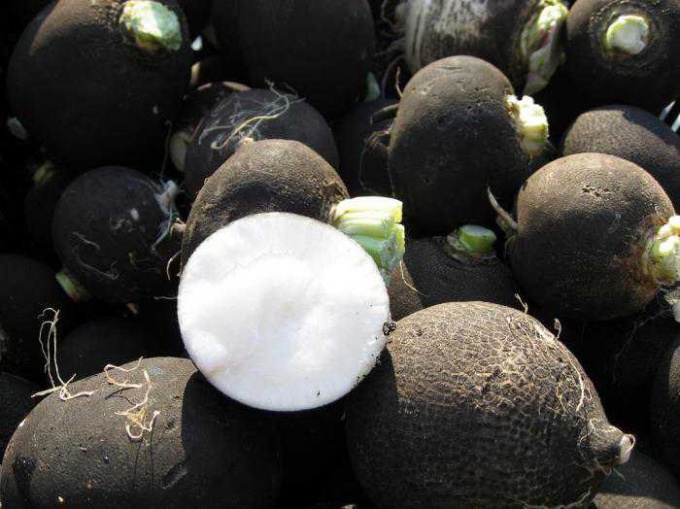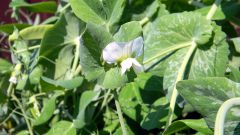Sowing radish
The radishes are starting to plant in the spring or summer. Early and early maturing varieties are sown in late spring, and varieties, suitable for long winter storage, sow in autumn. This root vegetable does not like the shade, so the area must be well lit. Bed you need to carefully dig up and saturate the soil with a small amount of fertilizer. Per square meter paid half a liter of ash and a bucket of old manure. Manure should be propavshim, and in any case not fresh.
Radish grows very poorly on old beds under turnip, cabbage or radish. Planting will have a big harvest, if earlier, on the land growing crops such as cucumbers, carrots, beans, potatoes, tomatoes. Winter varieties of black radish grow well in the beds remaining after harvesting onions.
Purchased seeds are sown in rows with spacing of 40 inches, while the depth of planting is 2-3 cm. As soon as the first seedlings with 3-4 leaves, need to hold the loosening space between rows, and, if necessary, to carry out thinning. As a result, between adjacent plants in the row should remain 4-5 inches. When re-thinning procedure, this distance should be increased to 15 inches. If the radish to grow too thickly, it can bloom, and root will be fine.
Care roots
At high humidity of soil on the site can be used to enrich the soil, dry fertilizers. The first dressing is done after the growth of seedlings of 3-4 leaves. The second feeding is carried out in about a month, when the fetus is actively developing. In the bucket of water dissolve the potassium chloride (15 g), urea (20 g) and superphosphate (60 g). The resulting solution, after thorough mixing, was poured onto the garden, a bucket for every 10-15 meters the length of the series.
To black radishes born to glory, it must be watered regularly. Even short-term presence of the vegetable in overly dry soil may reduce the quality and quantity of the crop. If the soil at the site is clay, it is more likely to loose, if it is sandy, from cultivation can be dispensed with.
No need to plant winter varieties before mid-summer because it will increase the risk of their flowering. But to late for the harvest just not worth it, because at the first frosts pulp roots become stiff. Harvest before the first frost. But if the site has seen a wireworm, is better to remove the vegetables simultaneously with the potatoes.

